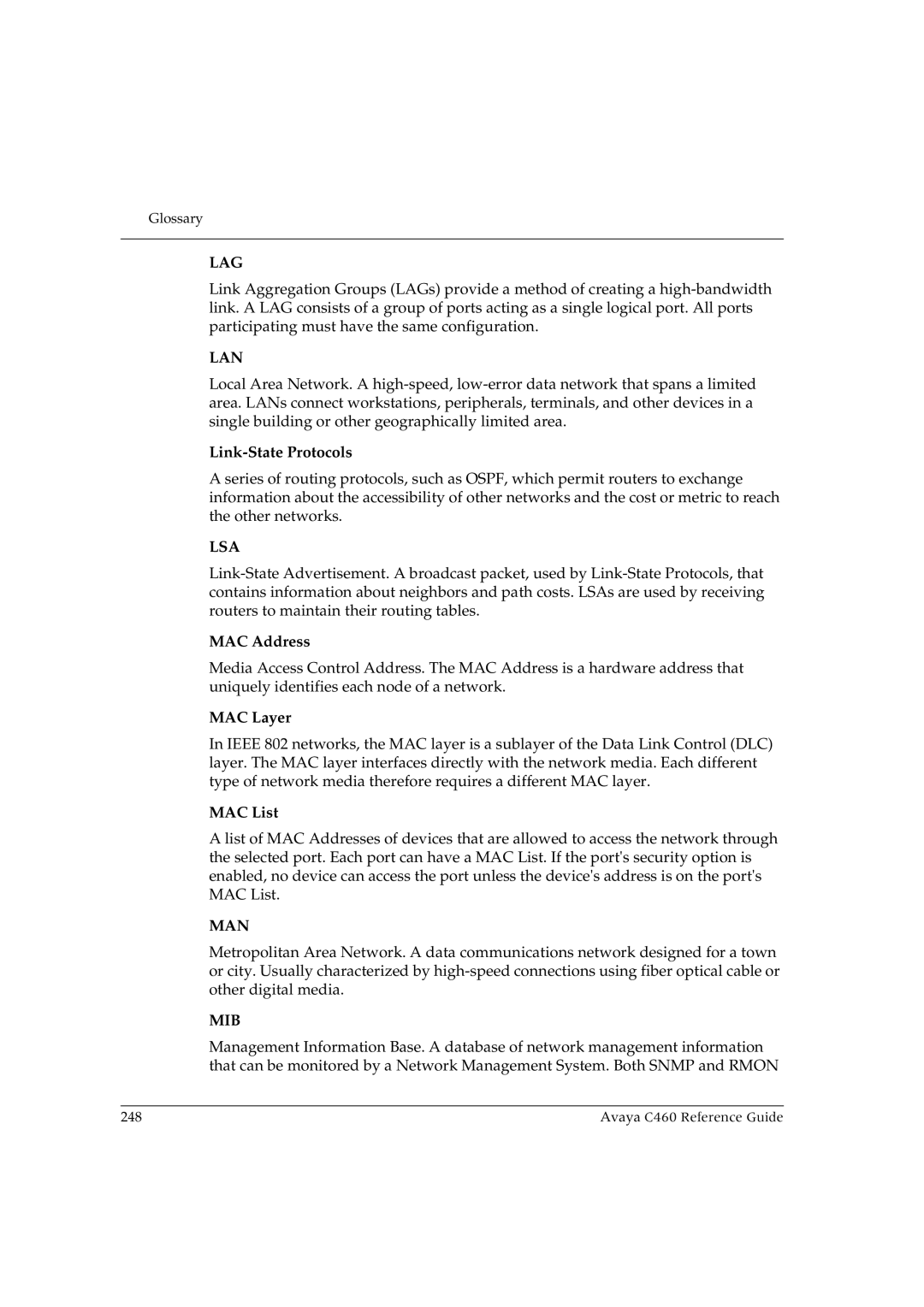
Glossary
LAG
Link Aggregation Groups (LAGs) provide a method of creating a
LAN
Local Area Network. A
Link-State Protocols
A series of routing protocols, such as OSPF, which permit routers to exchange information about the accessibility of other networks and the cost or metric to reach the other networks.
LSA
MAC Address
Media Access Control Address. The MAC Address is a hardware address that uniquely identifies each node of a network.
MAC Layer
In IEEE 802 networks, the MAC layer is a sublayer of the Data Link Control (DLC) layer. The MAC layer interfaces directly with the network media. Each different type of network media therefore requires a different MAC layer.
MAC List
A list of MAC Addresses of devices that are allowed to access the network through the selected port. Each port can have a MAC List. If the port's security option is enabled, no device can access the port unless the device's address is on the port's MAC List.
MAN
Metropolitan Area Network. A data communications network designed for a town or city. Usually characterized by
MIB
Management Information Base. A database of network management information that can be monitored by a Network Management System. Both SNMP and RMON
248 | Avaya C460 Reference Guide |
